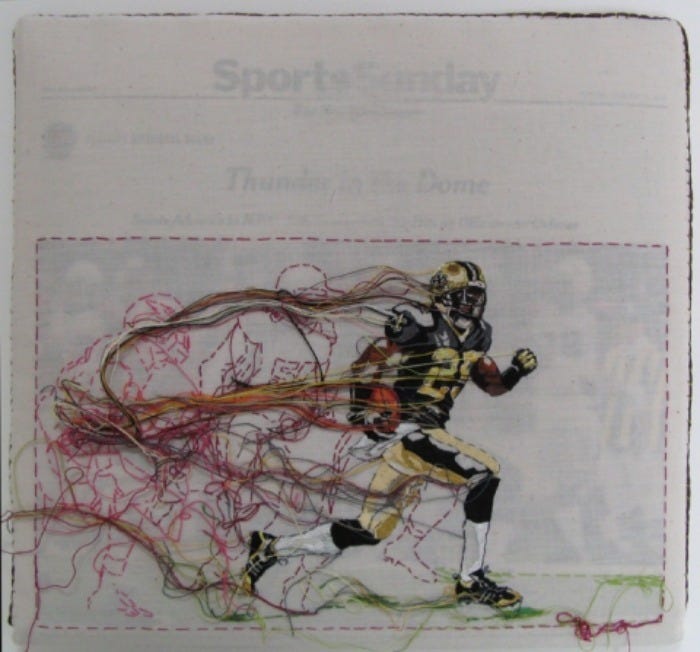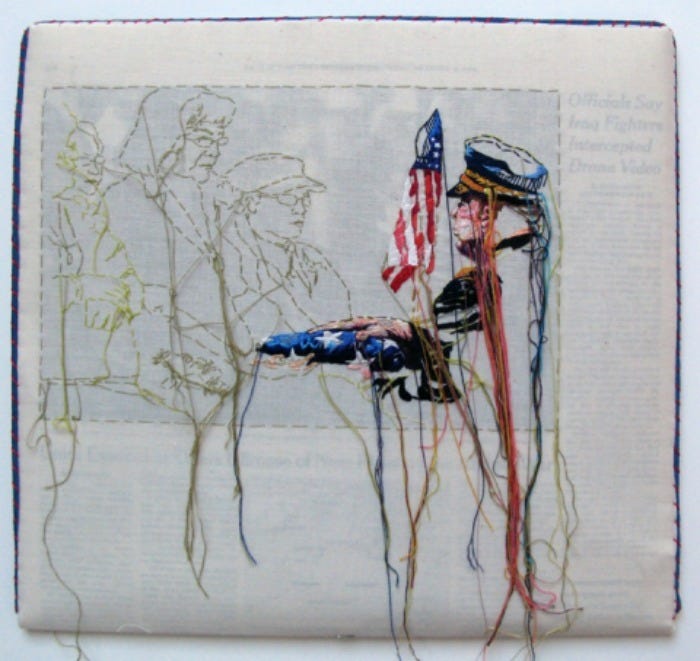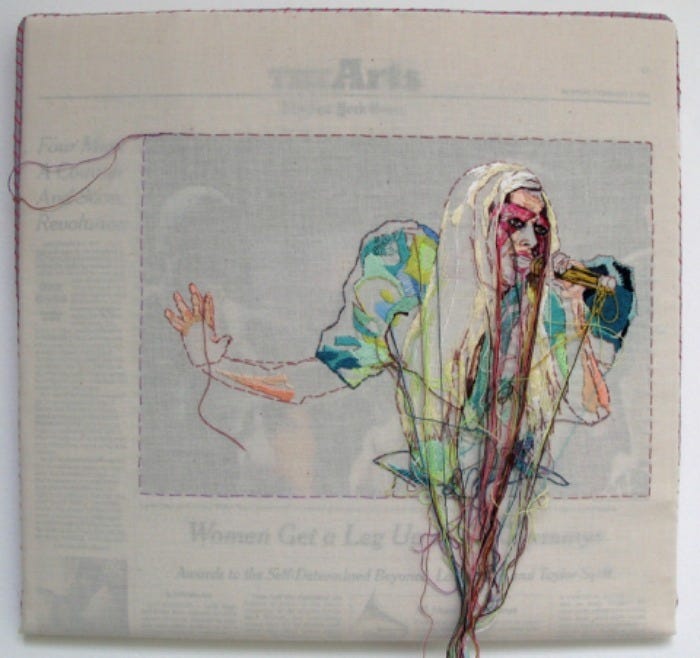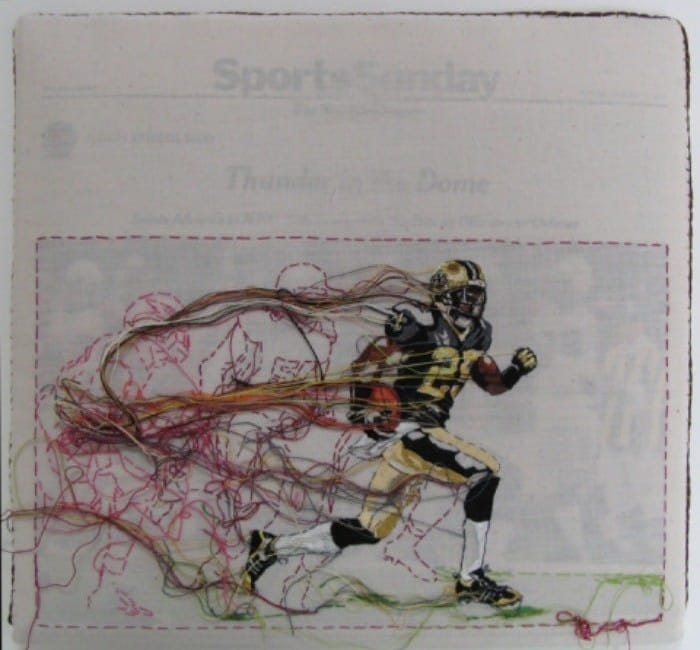
We at The Bold Italic have been longtime fans of the artwork of Lauren DiCioccio. In fact, we carry this San Francisco artist’s handy embroidered polyester taffeta interpretation of the classic plastic “Thank You” bag in our online shop. If you’re like us and want to see more of her work, you’re in luck — one of Lauren’s most impressive installation collections, Sewnnews, will be on display at the artMRKT Contemporary Art Faire at Fort Mason, from tomorrow, May 15 through Sunday, May 19.

For this series, Lauren takes important moments in history as they are depicted on the front page of the various sections of The New York Times and stitches them in stunning color. With print media becoming less and less a part of our everyday lives, Lauren has found another way to make news tactile. The subject matters of the pieces range from important sports moments to political history to pop culture. Each of these snapshots are beautifully captured in cloth and thread by Lauren’s intriguing style and color palette.

Wanting to know a bit more about her work, I reached out to Lauren with some questions:
TBI: How do you choose the photos you embroider?
Lauren DiCioccio: When I started this series, I particularly looked for people who were communicating in some way — gesturing or speaking. As the series progressed, I decided that I wanted to represent a fuller spectrum of subjects covered in the daily paper, so I started drawing images from other sections of the paper. I collect images through the serendipity of seeing the paper, and also every few months I will go to the library and pull all The New York Times from the archives to look for source material. It’s a fascinating way to travel through time, leafing through every page of a three-foot high stack of newspapers. I really choose the images for their subject matter and narrative qualities, and also the formal characteristics that make the image conducive to my embroidery (size, background/foreground, light, etc).
TBI: What inspired you to use newspaper?
LC: I started making these embroidered newspapers in 2006. At the time, I was making paintings on newspaper pages as an inexpensive and convenient surface on which to work out ideas. When I looked at my paintings from years past, I would flip them over and appreciate the exposed newsprint on their undersides — reading the articles and noting what city the newspaper had been from was such an interesting and evocative indicator of time and place. I thought about the newspaper as an object; it has such specific and unique qualities like the way it smells and the way it feels, the way the newsprint rubs off onto your fingers, and the sound of turning the pages.
TBI: What process do you use for transferring the photos to cloth?
LC: I transfer the image onto tracing paper, and from that drawing, I transfer it onto cloth using a disappearing ink fabric marker. With the fabric in an embroidery hoop, I do a running-stitch over the line drawing, wash away the pen, and start “painting” the image with the colors of thread.
TBI: How long have you been embroidering and who taught you?
LC: I have been using embroidery in my work since 2005 or 2006. I learned to embroider from my mom when I was young. We were always doing craft projects — sewing, cross-stitching, etc. When I started using embroidery as a medium in my artwork, it looked pretty traditional. I eventually loosened up my techniques by thinking about applying color and line as if I were drawing or painting.
TBI: I love how the threads extend from the images down through the copy; what inspired that?
LC: I bring all of the threads I embroider with to the outside/front of the embroidery, rather than tucking them in the back and clipping off the excess. This allows the image to drip off the “canvas” or to knot and tangle and turn abstract. I like that these threads show process but also fragility. I leave my embroidery somewhat unfinishedlooking and like them to feel like if you tugged on any of the threads, the whole image might unravel. This conveys the fragility not only of the medium but of the newspaper and the stories it tells, and perhaps of life in general.
In addition to artMRKT this weekend, Lauren’s work can also be found at “The Art of Recology” at the SFO Airport Museum and “Faux Real” and the Laguna Art Museum in Laguna Beach.







